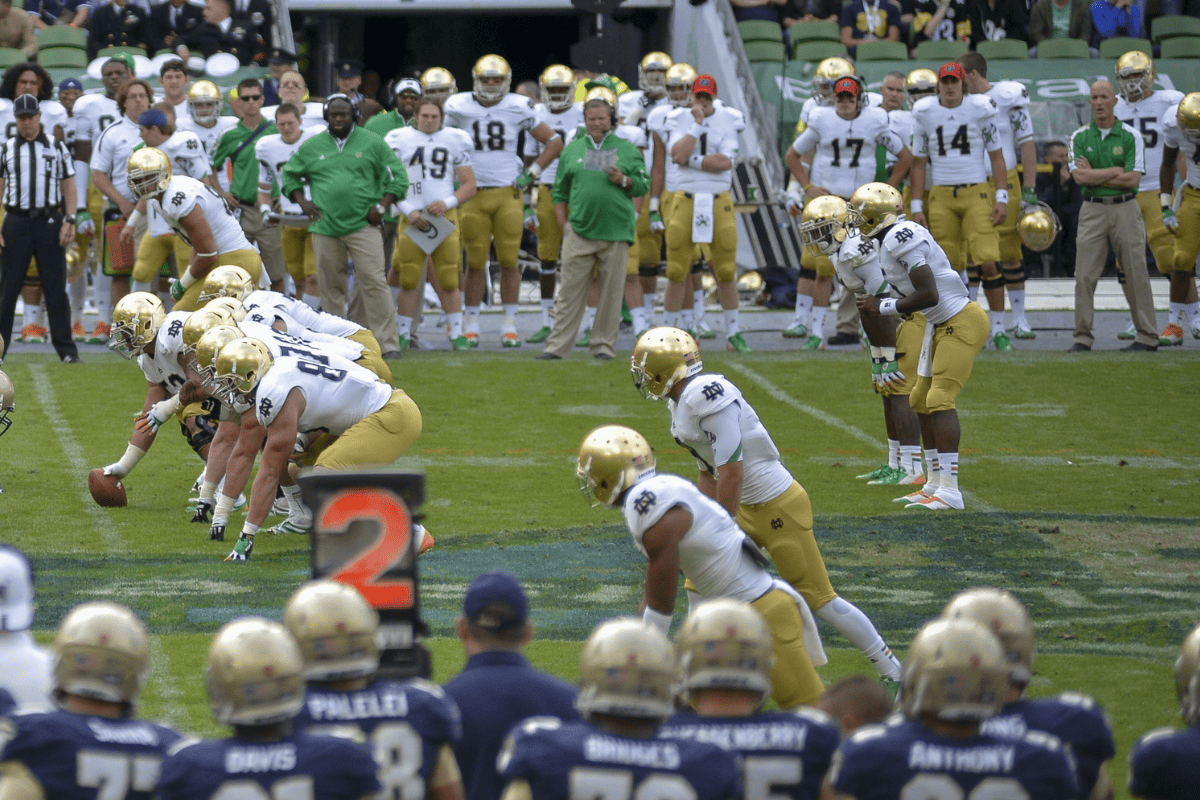Slot Receiver vs Wide Receiver: What’s the Difference?
In the dynamic world of football, wide receivers play a pivotal role in any offensive strategy. Among these agile and swift players, two positions stand out: the slot receiver and the wide receiver.
While both are integral to the team’s success, their roles, skills, and positioning on the field differ significantly. This article delves into the nuances of these positions, shedding light on what sets them apart and how they collectively shape the outcome of the game.
The Wide Receiver: Roles and Responsibilities
A wide receiver, in the broadest sense, is a key player in a football team’s offensive unit. Tasked with receiving passes from the quarterback, their primary role is to create opportunities and gain yards, often leading to spectacular touchdowns.
Wide receivers are typically categorized based on their position on the field: as an outside receiver, often referred to as the X receiver, or a slot receiver, known as the Y or Z receiver depending on the formation. The distinction between these types is crucial in understanding their specific responsibilities and the skills required to excel in these roles.
Slot Receiver: The Inside Story

The slot receiver, often an unsung hero on the field, plays a crucial role in any offense. Positioned between the last man on the line of scrimmage and the outside receiver, this player has a unique placement that offers both challenges and opportunities.
Unlike their counterparts on the outside, slot receivers operate in a congested area, requiring them to have exceptional awareness of their surroundings. Their primary role involves running precise routes that often cut across the middle of the field, making them pivotal in short passing plays and crucial for gaining those hard-earned yards in tight spaces.
Key Qualities of a Successful Slot Receiver
What makes a slot receiver truly stand out?
First and foremost, agility and quickness are non-negotiable. These players must swiftly navigate through traffic, making sharp cuts and sudden stops. Secondly, a deep understanding of defensive schemes is paramount. A successful slot receiver can read the defense and adjust their routes accordingly, often on the fly.
Lastly, reliable hands and the toughness to withstand hits are essential, as slot receivers frequently make catches in high-collision areas.
The Outside Receiver: The Traditional Wideout

On the other side of the spectrum is the outside receiver, often known as the X receiver. These players line up closest to the sidelines and are typically the furthest receiver from the quarterback.
Their role?
To stretch the defense vertically and horizontally, creating space and opportunities for big plays. The outside receiver’s responsibilities are diverse, ranging from deep routes that challenge the defense’s speed to sideline catches that require precise footwork. Their position on the field demands a unique blend of skills to outmaneuver the defensive backs, often in one-on-one situations.
Essential Skills for an Outside Receiver
To excel as an outside receiver, certain skills are indispensable. Height and reach are vital – these attributes give the player an advantage in high-point catches, crucial in deep passes and red-zone situations. Speed is another critical factor; it allows the receiver to create separation from defenders, making them a constant deep threat.
Exceptional catching ability, especially in contested situations, sets apart the elite outside receivers. Lastly, the mental aspect – understanding the offense and the opponent’s defense – plays a significant role in a receiver’s success, allowing them to make split-second decisions that can change the course of the game.
Read More:
How Teams Utilize Both Positions
In modern football, the strategic deployment of slot and outside receivers is a game-changer. Coaches and quarterbacks utilize these players based on their unique skill sets to outsmart defenses.
Slot receivers are often key targets in short-to-medium range passing games, exploiting gaps in the defense’s coverage. They’re invaluable in third-down conversions, offering reliable options when a few yards can make all the difference.
In contrast, outside receivers are the go-to players for stretching the field and creating big-play opportunities. Their ability to draw the defense’s attention can open up the field for other players, making them integral in both passing and running plays.
The interplay between these positions allows offenses to be dynamic and unpredictable, keeping defenses guessing and on their heels.
The Blurring Lines Between Slot and Outside Receivers
Football, like any sport, evolves, and so do the roles within it. Traditionally, slot and outside receivers had distinct, separate roles. However, the lines are blurring in contemporary football.
Today, we see versatile receivers who excel in both roles, adapting to different formations and strategies. This adaptability is a testament to the increasing athleticism and skill of players, who can now handle the physical demands of the slot and the technical requirements of the outside. The evolution of these roles reflects the game’s strategic complexity and highlights the importance of versatility in modern football.
Players Who Defined the Positions
Throughout football history, certain players have exemplified the quintessential slot and outside receiver roles. Legendary names like Wes Welker and Julian Edelman revolutionized the slot receiver position, showing the world how impactful and dynamic these players can be.
On the outside, legends like Jerry Rice and Randy Moss dominated, using their speed, height, and exceptional catching abilities to set records and redefine the position. These players didn’t just excel in their roles; they expanded the understanding and strategic use of their positions, leaving a lasting impact on the game.
Conclusion
Understanding the differences and similarities between slot receivers and wide receivers offers a deeper appreciation for football’s strategic depth. These positions, while part of the same unit, demand unique skills and offer different advantages on the field.
The evolution of these roles and the players who have excelled in them reflect the ever-changing nature of the game, highlighting the importance of adaptability, skill, and strategic thinking in football.

